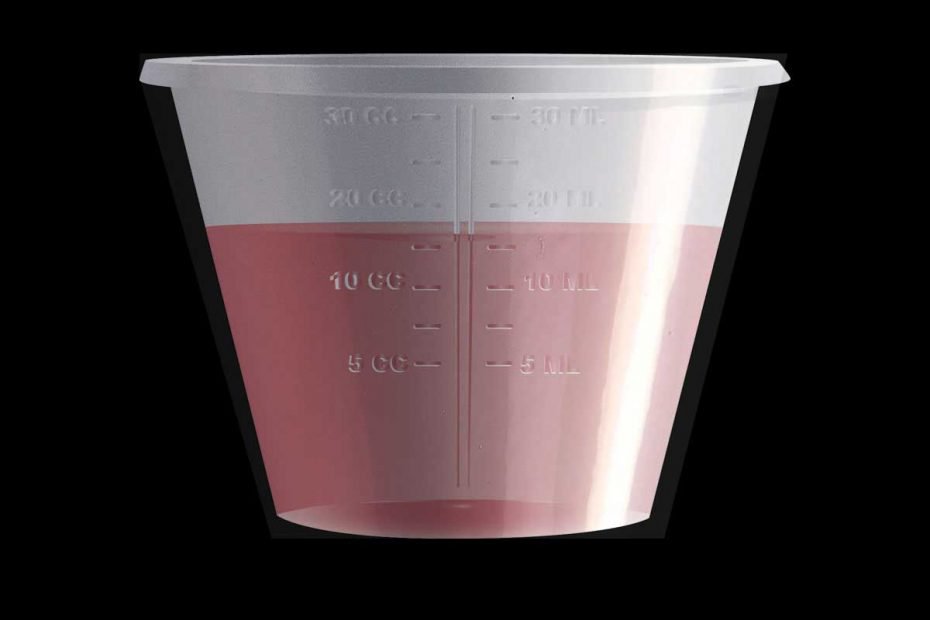How is it used?
In Australia, methadone maintenance treatment usually involves methadone syrup taken orally:
- Methadone Syrup: The main ingredient is methadone hydrochloride 5 mg/mL. The other ingredients are sodium benzoate, ethanol (4.4%), sorbitol solution, glycerol, yellow colour, anise flavour, and purified water.8
Methadone for opioid dependence
Generally, there are two types of methadone programs:
- Maintenance (long-term programs): May last for months or years and aim to improve quality of life and reduce the harms associated with drug use. Most commonly given when someone is actively going through opioid withdrawal.9,10
- Withdrawal (short-term detoxification programs): Short term programs focus on easing the discomfort of stopping opioid use.10
How effective is it?
Methadone pharmacotherapy has consistently shown positive results for the treatment of opioid dependence.9
However, methadone treatment is more likely to be successful if it’s part of a comprehensive treatment program, which addresses the body, mind and environment in which opioids are being used.11
For example, treatment may include a combination of methadone, counselling, alternative therapies, and a positive support network of peers and friends.11,12
Program characteristics play a key role in successful outcomes, with the most important factor being the length of time in treatment. Other factors that support patients include adequate dosing, and trust and confidentiality between patients and staff.9
Methadone maintenance may not work for everyone, so it’s important to consult a doctor or drug counsellor to find the best approach.
Advantages of methadone maintenance over heroin use:
- Methadone maintenance helps to keep a person stable while they make positive changes in their life.4
- Health problems, particularly those related to injecting drugs, such as HIV, hepatitis B and C, skin infections, and vein issues, are reduced or avoided.9
- Methadone withdrawals are more easily managed than withdrawals from heroin.13
- Methadone’s long-lasting effect (24 to 36 hours) of preventing withdrawal allows most patients to take a dose and remain stable. This avoids the four-hour cycles of high and withdrawal seen with heroin use.14
Effects of methadone
Use of any drug can have risks. It’s important to be careful when taking any type of drug.
Methadone can affect everyone differently, based on:
- size, weight and health
- whether the person is used to taking it
- whether other drugs are taken around the same time
- the amount taken
- the environment (where the drug is taken)
Side effects
A single dose of methadone lasts about 24 to 36 hours.14
The main side effects of methadone typically happen during the early stages of maintenance treatment.9
These are:
- sweating (drink at least two litres of water each day to prevent dehydration)
- difficulty passing urine
- loss of appetite, nausea and vomiting
- abdominal cramps
- constipation
- aching muscles and joints
- irregular periods
- low sex drive in males
- rashes and itching
- lethargy, mental clouding and confusion.13
For methadone maintenance treatment, your doctor will determine your methadone dose. If the dosage is too low, you may still experience opioid withdrawal symptoms along with methadone’s negative side effects.13
Overdose
If you take a large amount of methadone, you could overdose.
Methadone can cause death. Call triple zero (000) and request an ambulance if you or someone else has any of the following symptoms (emergency services are there to help and can provide instructions over the phone):
- difficulty breathing
- drowsiness or unconsciousness
- slack muscles
- seizures
- cold, clammy blueish skin, or greyish/ashen skin
- coma.13
Provide as much information as possible about the drug taken, the amount, timing, any other substances involved, and any pre-existing medical conditions.
If you think someone has overdosed on methadone, give them naloxone. This can temporarily reverse the effects of a methadone overdose.13
There is an increased risk of overdose within the first two weeks of methadone treatment or when switching from another opioid pain medication.13,15
The pain relief from methadone happens before its effects on breathing, this means taking more doses can dangerously affect a person’s ability to breathe.13
Long-term effects
Regular use of methadone may eventually cause physical and psychological dependence.13
Tolerance and dependence
A person’s tolerance to methadone usually stays stable, allowing those on methadone maintenance treatment to remain on the same dose for many years. Although tolerance to methadone’s pain-relieving effects may develop, the drug still reduces opioid cravings and prevents withdrawal, even after 30 years of use.4,9,14
Mixing methadone with other drugs
Mixing amphetamines with other drugs can have unpredictable effects and increase the risk of harm.
- Methadone and alcohol/benzodiazepines: Risk of increased drowsiness. This includes slowed breathing. Potential to cause coma and death.13
- Methadone and MAOI antidepressants: Can cause delirium, convulsions, breathing difficulties and death.13
- Methadone and fluoxetine (antidepressant): Can increase concentration of methadone in the blood. Check with your doctor about dosages for methadone and fluoxetine.9
- Methadone and GHB/GBL: Can quickly lead to unconsciousness. While unconscious, there is a risk of choking on vomit if the person is not placed in the recovery position. Can cause death.16
- Methadone and Ketamine: Both substances carry a risk of vomiting and unconsciousness. While unconscious, there is a risk of choking on vomit if the person is not placed in the recovery position. Can cause death.16
- Methadone and stimulants: Stimulants raise the breathing rate, allowing for a higher dose of methadone than usual. However, if the stimulant wears off first, methadone may dangerously slow the person’s breathing.16
Reducing harm
- Follow your doctors’ instructions on how and when to take methadone. Do not stop taking methadone or change the dose without talking to your doctor.
- When starting methadone treatment or making significant dose adjustments, a person should avoid driving or operating heavy machinery.17
- Talk to your doctor if you experience any unexpected side effects or discomfort.
Withdrawal
Stopping methadone treatment after using it for a long time is challenging because the body has to get used to functioning without it.
Withdrawal symptoms typically start 24-36 hours after the last dose. They peak around 3 days, then gradually subside.13
Symptoms include:
- Runny nose
- Yawning
- Sweating
- Restlessness
- Irritability
- Fever
- Chills
- Abdominal cramps
- Diarrhea
- Nausea
- Itching
- Agitation and anxiety
- Cravings for methadone13
Methadone and pregnancy
Methadone is not known to cause birth defects.13
Babies born to people who are dependent on methadone during pregnancy will also be dependent on the drug. This leads to withdrawal symptoms in the newborn, which can be dangerous if not identified. Pregnant people using methadone long-term should be aware of these risks.13
For people receiving methadone treatment for heroin dependence, methadone is a safer option than injecting heroin during pregnancy, as the baby's withdrawal symptoms are likely to be milder and easier to manage.13
Small amounts of the drug are present in breastmilk. However, negative effects on the baby are unlikely.13
Getting help
If your use of alcohol or other drugs is affecting your health, family, relationships, work, school, financial or other life situations, or you’re concerned about someone else, you can find help and support.
Call the National Alcohol and Other Drug Hotline on 1800 250 015 for free and confidential advice, information and counselling about alcohol and other drugs
Help and Support Services search
Find a service in your local area from our list. Simply add your location or postcode and filter by service type to quickly discover help near you.
Path2Help
Not sure what you are looking for?
Try our intuitive Path2Help tool and be matched with support information and services tailored to you.

Methadone is a Schedule 8 medicine in Australia. It is a medicine that a healthcare provider, such as your doctor, can prescribe to you. You can take your prescription to your pharmacist (chemist), who can supply this medication to you.10,18
It is illegal to use methadone without a valid prescription from a doctor or to sell or provide it to another person. Additionally, laws prohibit forging or altering prescriptions or providing false information to obtain methadone or a prescription for it.18
See also, drugs and the law.
In 2023, around 53,300 people across Australia received opioid pharmacotherapy treatment on any given day.19
35% of people receiving opioid pharmacotherapy were aged 40-49 years old.19
In 2023, methadone is more commonly prescribed for opioid pharmacotherapy in patients aged 40 and over, while buprenorphine is more frequently used for those in their 30s and younger.19
- Upfal J. Australian drug guide: the plain language guide to drugs and medicines of all kinds. Carlton, Vic, Australia: Black Inc., an imprint of Schwartz Publishing Pty Ltd; 2016 [cited 26.11.2024].
- Ruiz P, Strain EC, Langrod JG. The Substance Abuse Handbook. Philadelphia: Wolters Kluwer Health; 2007 [cited 26.11.2024].
- Layson-Wolf C, Goode J-V, Small RE. Clinical Use of Methadone. Journal of Pain & Palliative Care Pharmacotherapy. 2002; 16(1):29-59. [cited 23.10.2024]
- Bart G. Maintenance medication for opiate addiction: the foundation of recovery. J Addict Dis. 2012; 31(3):207-25. [cited 23.10.2024]
- Hanna V, Senderovich H. Methadone in Pain Management: A Systematic Review. The journal of pain. 2021; 22(3):233-45. [cited 23.10.2024]
- Health Direct. Methadone. 2023 [cited 24.10.2024]
- Brands B, Sproule, B & Marshman, J, editor. Drugs & drug abuse. 3rd ed. Ontario: Addiction Research Foundation; 1998.
- NPS MedicineWise. Aspen Methadone Syrup Methadone hydrochloride.
- Ruiz P, Strain EC, Langrod J. The substance abuse handbook. ed. Series editor^editors. Philadelphia: Wolters Kluwer Health/Lippincott Williams & Wilkins; 2007. p
- Gowing L, Ali R, Dunlop A, Farrell M, Lintzeris N. National Guidelines for Medication-Assisted Treatment of Opioid Dependence Commonwealth of Australia; 2014
- Kleber H. Pharmacologic treatments for opioid dependence: detoxification and maintenance options. Dialogues in Clinical Neuroscience. 2007; 9(4). [cited 29.10.2024]
- Cooperman NA, Lu S-E, Hanley AW, Puvananayagam T, Dooley-Budsock P, Kline A, et al. Telehealth Mindfulness-Oriented Recovery Enhancement vs Usual Care in Individuals With Opioid Use Disorder and Pain: A Randomized Clinical Trial. JAMA Psychiatry. 2024; 81(4):338-46. [cited 24.10.2024]
- Upfal J. Australian drug guide : the plain language guide to the top 300 drugs and medicines, plus more. Ninth edition ed. Series editor^editors. Collingwood, Vic.: Black Inc.; 2022. p
- Korsmeyer P, Kranzler HR. Methadone Maintenance Programs. Detroit, MI: Macmillan Reference USA; 2009 [updated 2009; cited 29.10.2024]
- National Academies of Sciences Engineering Medicine. Medications for Opioid Use Disorder Save Lives. Washington, DC: The National Academies Press; 2019 [cited 24.10.2024]
- Psychonaut Wiki. Methadone. 2024 [cited 29.10.2024]
- NSW Health. Methadone. 2024 [cited 29.10.2024]
- AusMed. Managing Schedule 8 Medicines Safely. 2024 [cited 29.10.2024]
- Australian Institute of Health and Welfare. National Opioid Pharmacotherapy Statistics Annual Data collection. 2024 [cited 29.10.2024]

